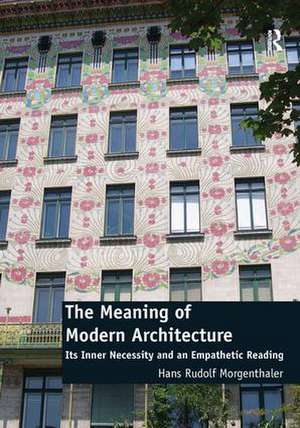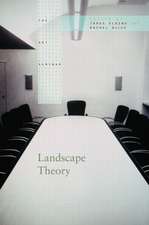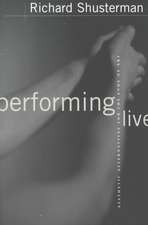The Meaning of Modern Architecture: Its Inner Necessity and an Empathetic Reading
Autor Hans Rudolf Morgenthaleren Limba Engleză Hardback – 7 aug 2015
| Toate formatele și edițiile | Preț | Express |
|---|---|---|
| Paperback (1) | 325.34 lei 6-8 săpt. | |
| Taylor & Francis – 12 oct 2017 | 325.34 lei 6-8 săpt. | |
| Hardback (1) | 764.51 lei 6-8 săpt. | |
| Taylor & Francis – 7 aug 2015 | 764.51 lei 6-8 săpt. |
Preț: 764.51 lei
Preț vechi: 1027.59 lei
-26% Nou
Puncte Express: 1147
Preț estimativ în valută:
146.31€ • 152.18$ • 120.79£
146.31€ • 152.18$ • 120.79£
Carte tipărită la comandă
Livrare economică 14-28 aprilie
Preluare comenzi: 021 569.72.76
Specificații
ISBN-13: 9781472453013
ISBN-10: 1472453018
Pagini: 168
Dimensiuni: 174 x 246 x 16 mm
Greutate: 0.47 kg
Ediția:1
Editura: Taylor & Francis
Colecția Routledge
Locul publicării:Oxford, United Kingdom
ISBN-10: 1472453018
Pagini: 168
Dimensiuni: 174 x 246 x 16 mm
Greutate: 0.47 kg
Ediția:1
Editura: Taylor & Francis
Colecția Routledge
Locul publicării:Oxford, United Kingdom
Notă biografică
Dr Hans R. Morgenthaler began studying art history at the University of Zürich, Switzerland. He finished his education at Stanford University in the US with the Ph.D. degree. He is an associate professor in the College of Architecture and Planning at the University of Colorado Denver, where he teaches architectural history lecture courses and seminars in 20th-century architectural history and theory. His main research interests lie in 20th-century Central European architecture with a special emphasis on theoretical questions. Within this field, he focuses particularly on interdisciplinary projects, which investigate architecture as a part of culture. He has published articles and books on the career of the German Expressionist architect Erich Mendelsohn, including two chapters in the book Eric Mendelsohn Architect 1887-1953, which was published in 2000. Current projects reach from an effort to update Vitruvius’s architectural treatise and an architectural guide to the buildings of Colorado, USA.
Cuprins
Introduction; Chapter 1 Wittgenstein House; Chapter 2 An Empathic Description and Interpretation of Le Corbusier’s Villa Savoye; Chapter 3 Spatial Esthetics and Einfühlung (Empathy); Chapter 4 The Inner Construction of Objects and Space; Chapter 5 Visual Perception and Artistic Judgment; Chapter 6 The Scientific Treatment of Perception and the Human Nature of the Viewer; Chapter 7 The Word on the Street; Chapter 8 House Schminke; Chapter 9 Casa del Fascio; Chapter 10 Haus Lange;
Descriere
This book analyses the buildings directly as the objects of study, not indirectly, as designs filtered through a philosophical or theoretical discourse.






















